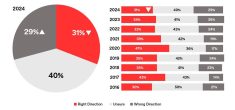chica go/re uters Great Lakes shorelines are becoming clogged by algae blooms fed by agricultural run-off, while invasive mussels decimate the food chain in deeper waters, according to the National Wildlife Federation.
The five lakes, which contain one-fifth of the world s fresh water and supply tens of millions of people, may be veering close to ecosystem collapse, the group said.
This past summer, Lake Erie was choked by toxic algae blooms up to two feet thick and 10 miles wide.
Read Also

Mazergroup’s Bob Mazer dies
Mazergroup’s Bob Mazer, who helped grow his family’s company into a string of farm equipment dealerships and the main dealer for New Holland machinery in Saskatchewan and Manitoba, died July 6 from cancer.
In deeper water, prolific quagga mussels have beaten out another invasive species, zebra mussels, and colonized vast stretches of the lake bottoms, filtering out vital plankton that is the base of the lakes food web. This starves small fish, which are food for top predators such as whitefish and salmon. There has been a 95 per cent decline in fish biomass in Lake Huron, one of three larger lakes, in the past 15 years, according to the group.
Scientists blame too much phosphorus from farm fertilizer run-off for the algae blooms, which decompose and create an oxygen-depleted dead zone. Among the report s recommendations are for farmers to leave buffer zones between farmland and waterways.


















